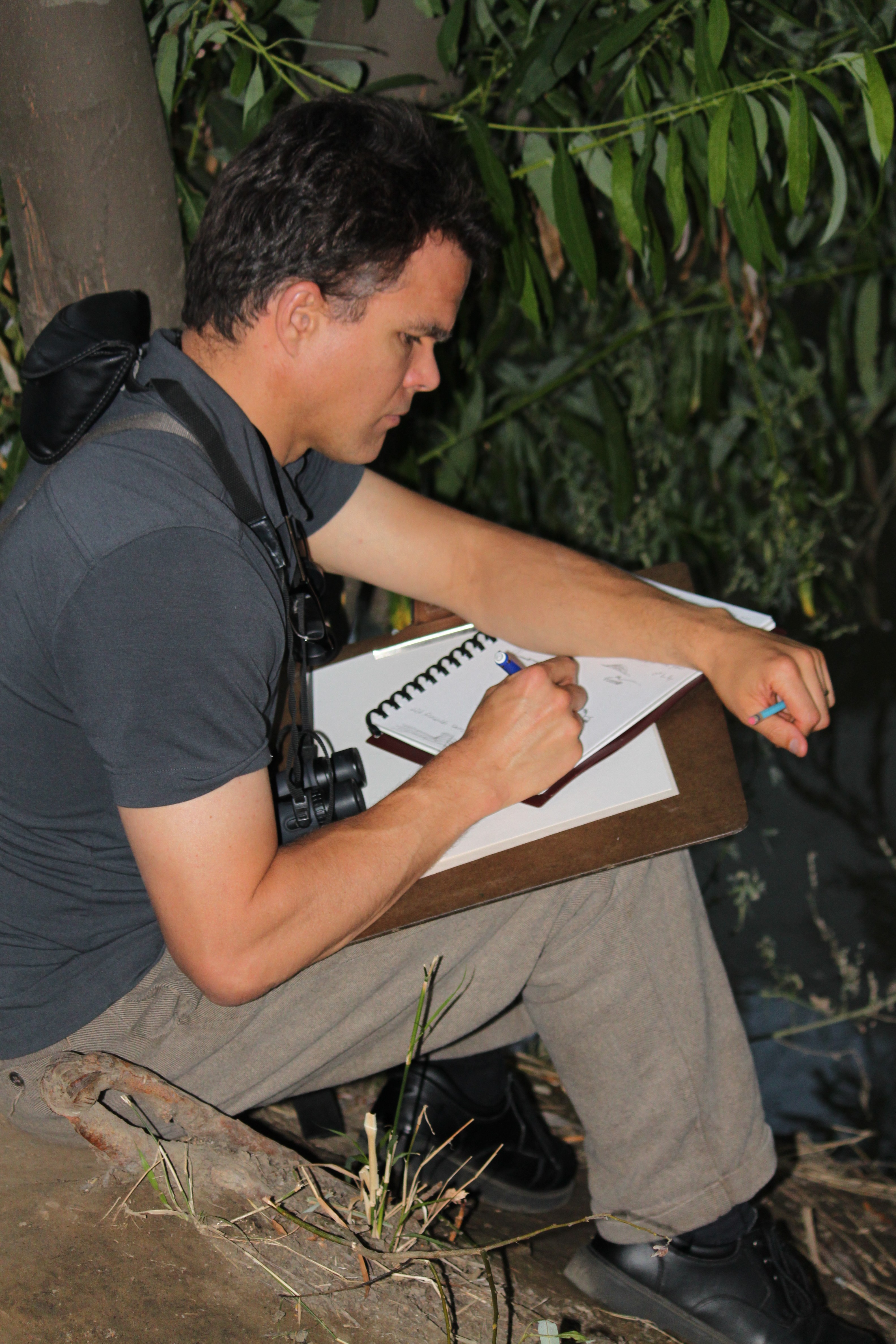
You probably know the talented wildlife artist John Muir Laws whose many books highlight the wonders of nature journaling and stewardship. His wonderful notes and sketches have graced the last page of Bay Nature for decades. Well this is him sketching the Martinez Beavers long ago at the dam site.
Naturalist’s Notebook: Go See the Beavers in Martinez
Well teaches a free online workshop once a month and has a conservationist from the community come talk about the focal species. And guess what it is this month?
Thursday May 15th I’ll be joining him and his many students to talk about the most famous beavers in history and why great engineers deserve great artists. Hopefully we will encourage many new creators of beaver wonders.

Join John Muir Laws and Heidi Perryman as we explore beaver conservation, why beavers are important parts of ecosystems and how to draw these amazing creatures.
Heidi Perryman, Ph.D., is a child psychologist who became an accidental beaver advocate when beavers moved into her hometown in 2006. She served on the beaver subcommittee to help the city decide how to respond, Then started the organization “Worth A Dam” to coordinate solutions and educate others about their value in the watershed. She has been particularly interested in the way that the beavers’ struggle has connected residents more closely to their environment, to their city government and to each other.
This year, Wolrth A Dam will hold its sixteenth beaver festival – an annual event that has grown to be one of the largest celebrations of urban wildlife in the state. California has come a long way in learning why beavers matter and how to live with them. Heidi is happy that Martinez could be an important part of that process.
All ages and experience levels are welcome. No registration is necessary.
Suggested donation: $20. Your donation helps support me and my family. Your generosity is deeply appreciated and it makes an immediate difference in my ability to continue to offer these programs. Your donation is tax-deductible. Click here to donate. If you are not able to donate at this time, no problem–please continue to enjoy the classes and find another way to pay it forward in your community with acts of kindness and service. Thank you!
If you are new to Zoom or are having trouble with the meeting controls, please see these notes and suggestions on Zoom Tips for Online Classes with John Muir Laws to help you get more out of the online workshop. When possible I will also make a recording of the workshop and post it on my blog. I look forward to seeing you there!
He is a wonderful teacher and nature is lucky to have him. I can’t wait to see what beaver wonders will trickle down from this class. He has already said he is interested in doing a new Nature Notes for the magazine.
Bring
-
- Your Journal and favorite drawing materials. Taking notes while you watch and participate will help you remember the new techniques and incorporate them into your journaling.
- Your sense of humor!
Go hear to join the class next Thursday from 10-11:30, no need to register.
 Meanwhile I’m pulling together some notes of my own:
Meanwhile I’m pulling together some notes of my own:







